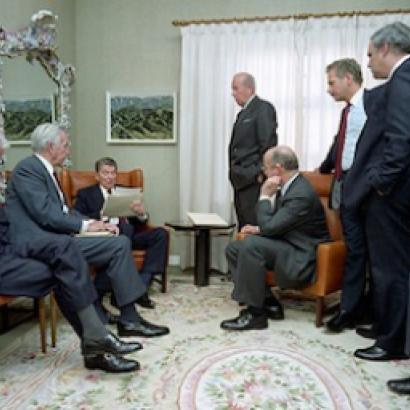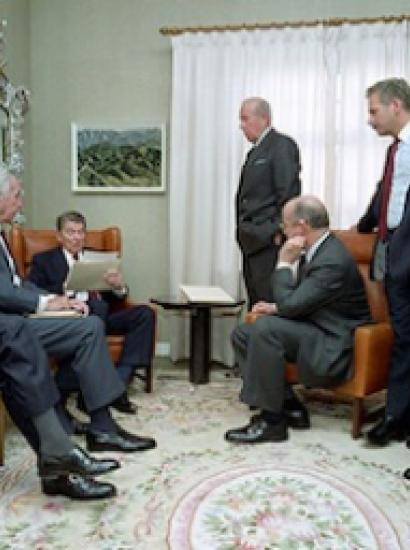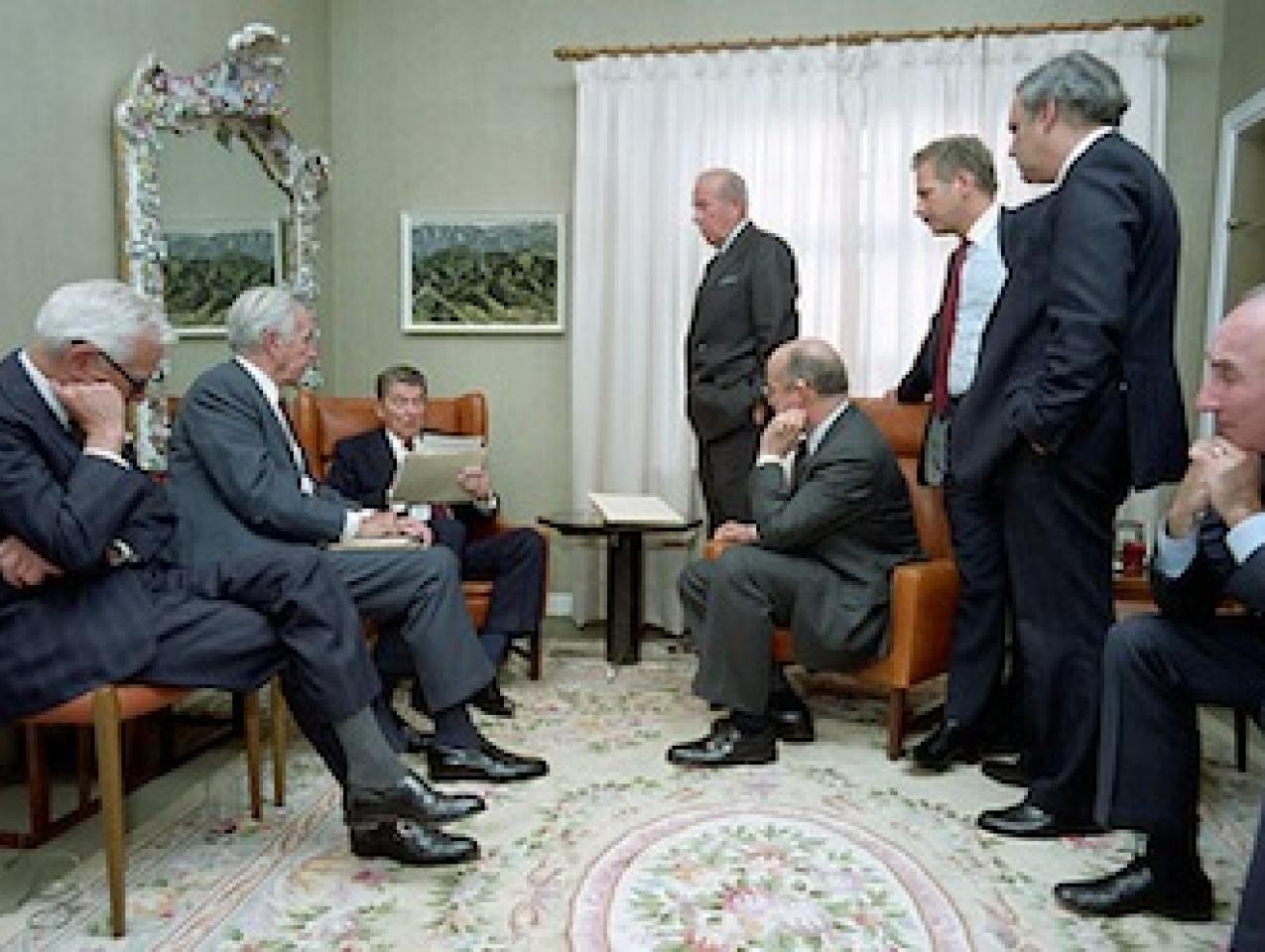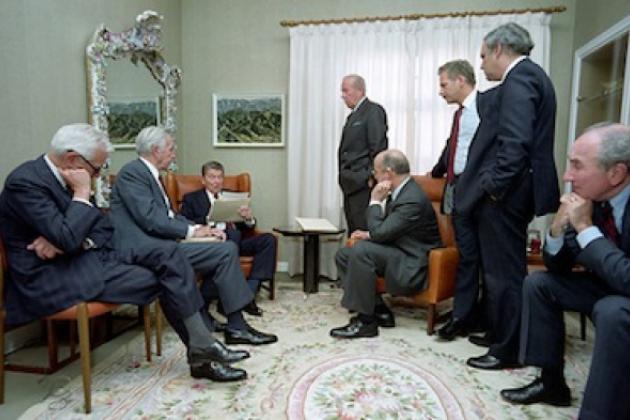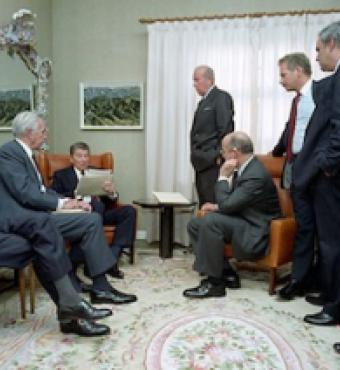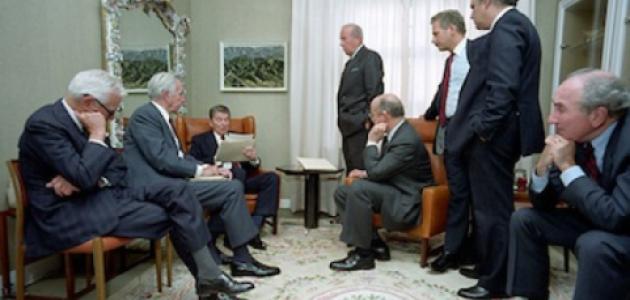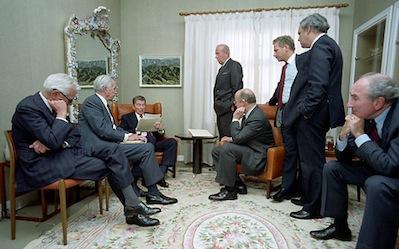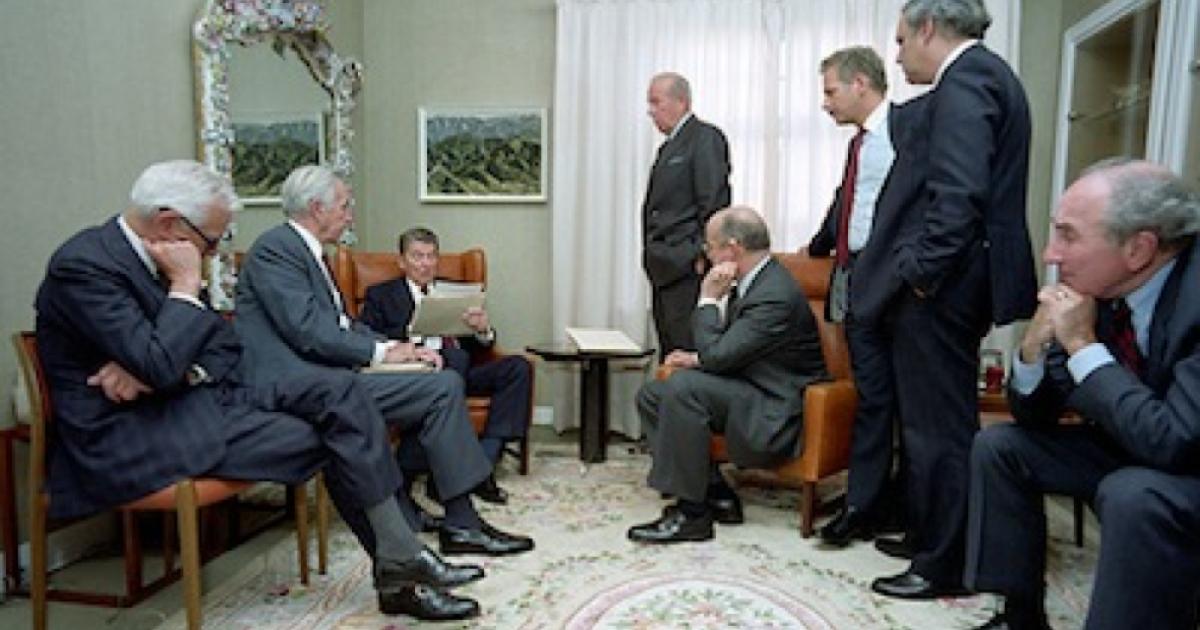- Politics, Institutions, and Public Opinion
Editor's note: The following essay is the second in a seven-part series of excerpts from George P. Shultz's new book Issues on My Mind: Strategies for the Future. Defining Ideas will feature these short excerpts from the book, accompanied by video interviews of Secretary Shultz.
If you are able to confront problems effectively and take advantage of opportunities fairly, you will be able to govern. So the issue of governance is an appropriate starting point for this exploration of how to achieve a better future.
Let’s begin by recognizing that good governance requires top-notch, highly accomplished people—the A team. These talented individuals then need to become part of a process and organizational structure in which they can work together constructively.
The second important element of governance is the ability to identify and understand the issues inherent in leadership. These issues are often daunting. These days, especially, vast technological changes providing wide availability of information and rapid communication have to be taken into account. Leaders must realize the difficulties posed as well as the opportunities available to convey important points to their constituents.
Of course, the most important ingredient for success in governance is leadership itself—the ability to create an environment conducive to learning and to involve people as active participants in the process. An atmosphere of trust is essential, as are standards of performance and accountability.
When these three interrelated elements of governance, each of key importance, interact, high performance will be the result.
How to Attract Top Talent to Government Service
Remember the historic touchstones: duty, privilege, and the opportunity to serve the common good, keeping in mind the constitutional process for governance that has stood us in good stead for more than two centuries. These days, however, this process is widely ignored, making it difficult to recruit the A team for many key positions where policy is developed and high-quality execution is needed.
The constitutional process starts with the election of a president, vice president, and members of Congress. Then the government functions through a variety of cabinet departments and agencies in the executive branch, authorized and funded through budgets appropriated by the Congress. So, in the executive branch, the president presumably governs through a fairly large number of his appointees who serve only after the Senate has given its advice and consent and who can be called to testify.
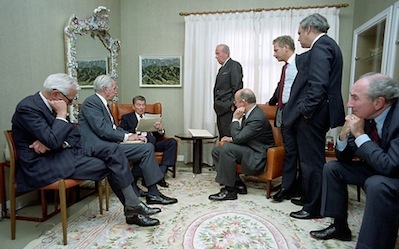
Photo credit: The Official CTBTO Photostream
This line of accountable executive authority is being broken and it must be restored if we are to have effective governance. Today, someone who accepts a presidential appointment must submit to an extensive vetting process, including endless questionnaires. This laborious process gives prospective appointees the impression that the government assumes there must be something wrong with them if they are willing to serve. It is as though the government is saying that its job is to discover and expose any skeletons, large or small, relevant or not, to public view. A candidate who passes this screening goes before a Senate committee and is subjected to additional questions. Sometimes the Senate acts promptly and votes for confirmation. In all too many cases, however, some senator puts a hold on the vote for reasons that have nothing to do with the candidate, who becomes a hostage to be released when the senator gets what he or she wants. As I put it in the Wall Street Journal on April 11, 2011:
The situation has been worsened by the difficulty of getting presidential nominees to cabinet and subcabinet positions approved and in place. The White House vetting process has become exhaustive, with potential appointees required to fill out extensive questionnaires on such things as foreign travel and personal acquaintances, let alone financial matters. Mistakes are potentially subject to criminal penalties. The result is a drawn-out and often disagreeable process from the time a person agrees to a job to the actual nomination, and then to confirmation, should it be granted by the Senate.
Once finally confirmed, the candidate often reports mainly to a White House aide the president has chosen to oversee the policy process. This means that policy is not as good as it could be because cabinet officers and their staffs, who bring real talent to the table and have access to the impressive capabilities and storehouses of knowledge of the career people in their departments, do not communicate directly with the president.
Under a much better process, the president would designate key areas of policy and execution, form an appropriate group of cabinet officers and their associates, and look to them, in effect, as his staff for policy development. This process would produce better policies and more effective follow-through by the departments that ultimately execute the policies. It would also offer an enhanced ability to see that all relevant points of view and areas of experience are represented in the policy process. As I continued in my Journal op-ed:
To return to a more effective and constitutionally sound use of cabinet members and their departments in helping the president formulate policy, cabinet secretaries could be grouped into important functional categories—national security and foreign policy, economics, natural resources, human resources, the rule of law, education, health, and others. All of these subjects involve more than one department. Sometimes the natural convener is obvious; in other instances the leading role might simply rotate.
With the help of staff coordinators in the White House, cabinet members might convene by themselves and then with the president. This would involve the departments and, at the same time, ensure that a presidential, rather than a departmental, point of view would prevail. Policy execution would be improved, as would support for legislative initiatives.
Using the method I recommend also leads to the construction of a more accountable and constitutional governmental process because the people closest to the president will have been confirmed by the Senate and can be called to testify. Another benefit is a more complete interaction of relevant views since a policy group can be formed, including all the departments with an interest in, and experience with, the issues involved.
The present process, with its debilitating appointment ordeal and too many unaccountable parts, has evolved over time and could be set straight by an understanding between the president and the leaders of the Senate. Here’s an example of how an outstanding public servant was appointed in the early 1940s.
I had the privilege of being associated with Paul Nitze when I was secretary of state. He was a great man and a superb public servant. In his autobiography, Paul described the way his federal government service began. He was an accomplished, financially successful person who was a partner at Dillon Read, an investment bank. His senior partner, James Forrestal, had been persuaded by President Franklin Roosevelt to come into the White House because Roosevelt, who could see the war clouds gathering, had no confident contact with the business or financial communities.
Paul tells of doing some work for Dillon Read in Louisiana when he received a cable from Forrestal saying, “I want you here Monday morning.” Paul dropped what he was doing and showed up. Forrestal told Paul that he had an office with two desks, an assistant who seemed to know everything and could help them both, and a rented house in Georgetown with an extra room for Paul. Paul would have to stay on the Dillon Read payroll, Forrestal said, because there was no money to pay him, but he should get to work right way. So, relates Paul, “In this wholly illegal fashion my career in Washington began.”
There could be no more distinguished public servant than Paul Nitze. I am not recommending that we adopt the total lack of process used for Paul, but a careful check of FBI and IRS records would flush out any real problems, particularly when coupled with the admonition that if a candidate has major skeletons in the closet, they will almost certainly surface. With today’s vetting process, it is doubtful that Paul Nitze could be attracted to take a post in the federal government. But we need the Paul Nitzes of this world to work on resolving the tough problems we currently face.
Somehow we must balance a sensible vetting process with the assumption—common during the days when Paul Nitze was recruited— that people who are willing to serve are honorable and want to serve honorably. That is how we can get the A team on the job.








